MOT
2017 project files
September 2017Every year, the MOT publishes a dossier highlighting exemplary cross-border projects along French borders.
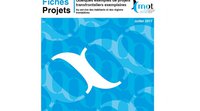
Every year, the MOT publishes a dossier highlighting exemplary cross-border projects along French borders.
Good quality healthcare for the populations of the French-Luxembourgish border regions, made more accessible, more rapid and closer to home - this is the objective of the framework agreement on health cooperation ratified by Luxembourg and France.
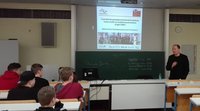
This is the aim of the project FagA/Centre d’aide à la mobilité transfrontalière (CAMT – Centre for Assistance with Cross-Border Mobility) launched on 1 July 2016 in the SaarMoselle Eurodistrict.
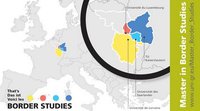
The "Master's in border studies" is an international, interdisciplinary and multilingual study programme aimed at providing students who wish to pursue their careers in intercultural and cross-border settings with the main concepts and necessary analytical tools to understand the issues related to border territories and transnational cooperation.
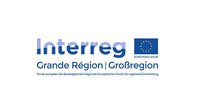
On 25 April 2017 in Forbach, an event to launch the European project “Mobipro.GR“ took place.
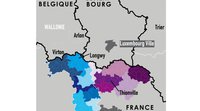
This report, submitted by the General Commission for Territorial Equality (CGET) to the Prime Minister, recommends the creation of a pôle métropolitain encompassing more than 300,000 inhabitants on the border with Belgium and Luxembourg. This would enable North Lorraine to take advantage of its geographical position and of the great attractiveness of its immediate neighbours.

The field visits offered for the first time to participants in the MOT's 2017 general assembly, to Belval and Villerupt, proved to be a moment of very fruitful exchanges.
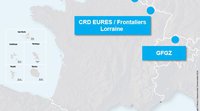
The annual meeting of the network on 15 March in Belval gave the MOT's new members the opportunity to speak, and these new members were presented to all of the participants.

Kussbus is a Luxembourg start-up which has just launched an innovative home-work shuttle service in the Luxembourg-France-Belgium-Germany border territory.
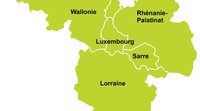
At the request of Luxembourg's Ministry for Sustainable Development and Infrastructures, acting on behalf of the different bodies of the Greater Region's Summit, a consortium led by the North Lorraine urban planning agency (AGAPE) in collaboration with the MOT, the urban planning agencies of Metz (AGURAM) and Nancy (ADUAN), and the Technical University of Kaiserslautern, carried out an assignment to assist with the drawing-up of the Greater Region's territorial development plan.
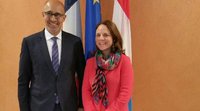
The 5th Franco-Luxembourg intergovernmental commission (IGC) for the strengthening of cross-border cooperation was held on 21 November 2016 in Luxembourg, in the presence of Harlem Désir, Secretary of State for European Affairs (FR), and Corinne Cahen, Minister for the Greater Region (LU).
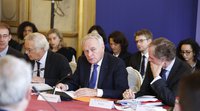
After several decades of innovative projects undertaken between neighbouring countries, cross-border territories have become shared living spaces, and places for discovering a “European citizenship” experienced in daily life.

The members of the CNCD (National Commission for Decentralized Cooperation) approved on 23 November 2016 a White Paper entitled “Diplomatie et territoires" (Diplomacy and Territories) proposed by the French Ministry of Foreign Affairs and International Development.
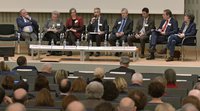
Close to 300 people gathered in Strasbourg for a major seminar on the cross-border relations of the new “Grand Est” region of France.

Published by Correspondances Lorraines. Author: Pascale Braun. October 2016. Retail price: €20. Title in English: "The Greater East Region: Europe among Neighbours"
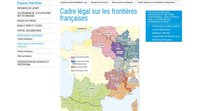
This summer, the MOT completely updated its online legal resources relating to cross-border cooperation law.
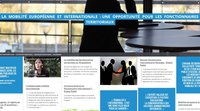
The Institut National des Études Territoriales (INET) in Strasbourg has put online a platform designed to centralise a large amount of disparate information about French territorial civil servants' possibilities for mobility in Europe and internationally.
The second edition of “Startup Show 42”, a cross-border digital innovation fair, was held on 6 April in Metz on the fringes of the Franco-German Council of Ministers. Over forty startups from the Lorraine Corridor (Epinal, Nancy, Metz, Thionville) and the QuattroPole city network (Luxembourg, Metz, Saarbrücken, Trier) were there to present their know-how and latest innovations.

The "Grex" platform was set up on 4 January 2016 in order to provide operational support to any sole trader or SME wishing to develop an economic partnership in the Greater Region.
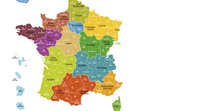
Following the regional elections and the reform which reduced the number of regions in mainland France from 22 to 13, the MOT has published a note (in French) on the new French regions and the territorial reform: what will be the impact on cross-border cooperation?.
Taking note of the “de Ruyter” decision of the CJEU, “the [French] Government specifies in a communiqué published on 20th October the conditions for the introduction of recovery procedures relating to refunds of social contributions made on capital gains by residents and non-residents who are covered by social security schemes of other Member States of the European Union, the European Economic Area, or Switzerland.”

Since January 2014, the MOT has been carrying out a project supported by the national technical assistance programme Europ'Act relating to the economic development of the cross-border territories along France's borders. The results of this work will be presented at the project's final conference on 30 September in Paris.
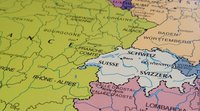
The New Territorial Organisation of the Republic Act (the "NOTRe Act") was promulgated on 7 August 2015 in France.
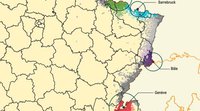
According to a study by the INSEE published in February 2015, the number of French people living in France but working abroad has increased by 42% since 1999. The study analyses the different causes and characteristics of the resulting flows.

"Wallonia is a border territory par excellence: its relations with its neighbours have always played a crucial role in its development."